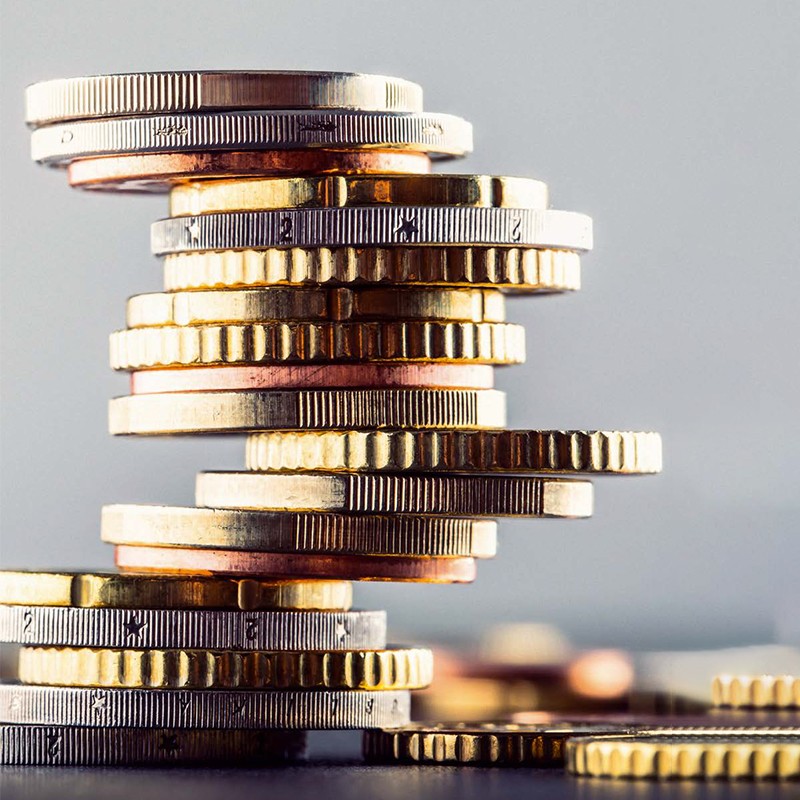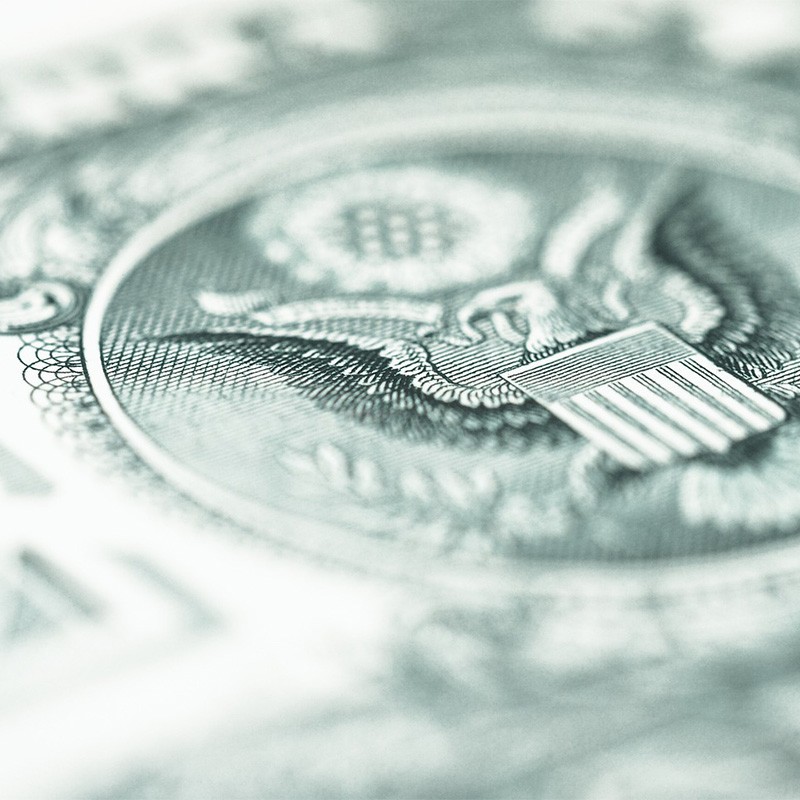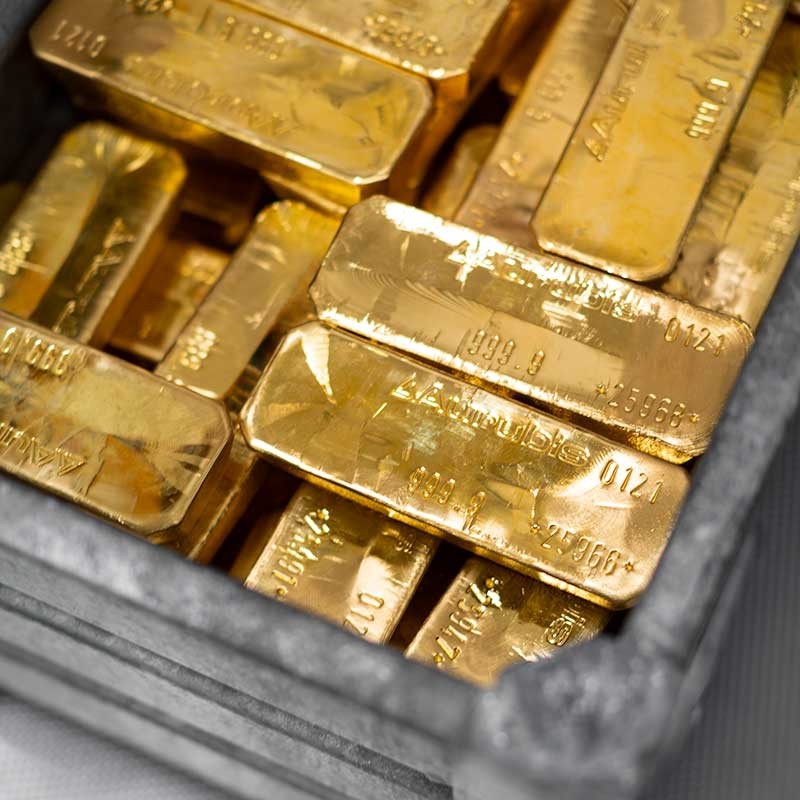Gold is an excellent hedge against structural economic crises such as hyperinflation, debt crises or currency crises. It also protects investors against severe political crises.
Gold is an excellent hedge against structural economic crises such as hyperinflation, debt crises or currency crises. It also protects investors against severe political crises, including the outbreak of war. In times of deep crises, investors seek refuge in gold because it has proved over the centuries to offer security during turbulent times. It is wise to establish a gold reserve during stable periods.
Structural inflation is often just the flip side of structural over-indebtedness. For some time now, industrialized nations have been suffering from high levels of government debt. In 1980, the US national debt stood at one trillion dollars; by June 2024, it had risen to nearly 35 trillion. To put this in perspective, at a gold price of USD 60,000 per kilogram, this would correspond to almost 600,000 tons of gold — nearly three times the amount that has ever been mined. The structural imbalance between revenues and expenditures, coupled with deep demographic changes, will continue to drive up national debt.
While debt has skyrocketed, interest payments have risen only slightly or even fallen over the years. This is due to interest rates being lowered to all-time lows in the past decades, allowing debtors to refinance old debts with new, lower-interest debt. This era of zero and even negative interest rates came to an end with the inflation wave of 2021–2023. As a result, interest expenses are now rising sharply. Even in a relatively conservative scenario, US interest payments are expected to nearly double to 5.7 per cent of GDP by 2050, equivalent to about half of total tax revenue.
Government debt in leading economies such as the USA, Japan, France and Italy has already exceeded 100 per cent of GDP, in some cases significantly. In some countries, including the USA, government debt has reached levels previously seen only during wartime. When factoring in social security system debts, the level of indebtedness is even higher. Moreover, not only are States indebted but also corporations and private households, sometimes significantly. In many industrialized countries, total societal debt — comprising government, corporate and private household debt — exceeds 200 per cent, and in countries such as France, it is over 300 per cent. Total debt is highest in Japan, however, where it exceeds 400 per cent.
There are few ways out of this debt trap: one is to ‘grow out’ of the debt through many years of strong economic growth, which is unlikely, at least in Europe; another is drastic budget cuts and rigid austerity measures or significantly higher tax rates, or a steady dose of so-called ‘financial repression’. Financial repression occurs when nominal interest rates are lower than the inflation rate. In other words, real interest rates are negative. This reduces the State's interest burden and contributes to the real reduction of the debt load. Therefore, central banks will likely attempt to lower interest rates as quickly as possible to drive down real interest rates. This tends to create a positive environment for the gold price.
Currently, central banks even view a certain level of price inflation as healthy. The European Central Bank aims for an annual price inflation rate of 2 per cent for the Eurozone. However, it is important to remember that a 2 per cent annual inflation rate would halve the purchasing power of money in about 36 years. At an average inflation rate of 3 per cent, purchasing power would halve in just 24 years. This also means that the real value of old debts would decrease at the same rate, favouring debt reduction at the expense of creditors.
Although the term ‘inflation’ is commonly used today as a synonym for rising consumer prices, it is important to understand the linguistic imprecision. The term originally comes from the Latin word inflare, meaning to inflate. Historically, the term referred to the expansion of the money supply, which typically led to rising consumer prices — or ‘price inflation’.
Over 500 years ago, Nicolaus Copernicus wrote in his Treatise on Money that “Although there are countless maladies that are forever causing the decline of kingdoms, princedoms and republics, the following four (in my judgment) are the most serious: civil discord, a high death rate, sterility of the soil, and the debasement of coinage. The first three are so obvious that everybody recognises the damage they cause; but the fourth one, which has to do with money, is noticed by only a few very thoughtful people, since it does not operate all at once and at a single blow, but gradually overthrows governments, and in a hidden, insidious way.”

It is particularly easy to increase the money supply through an unsecured ‘fiat money system’. Since the end of the Bretton Woods Agreement in 1971, practically all the world’s currencies have been completely unsecured. Formerly, the value and purchasing power of each currency was backed – at least partially – by gold reserves.
Simply put, central banks increase the money supply by purchasing public debt in the form of government bonds with the newly printed money. Numerous studies have shown that the growth of the money supply and the consequent rise in consumer prices is substantially higher in fiat money systems than in those that are backed by gold. In their wide-ranging study, American economists Rolnik and Weber demonstrated that the average inflation rate in fiat money systems is 9.2 per cent, while with the gold standard it is only 1.8 per cent.
With the outbreak of the war between Russia and Ukraine, another key characteristic of gold has come to the forefront: its role as a hedge against geopolitical risks. Unlike government-issued currencies, gold is neutral. As a result, it has gained significant importance, especially among non-Western central banks, since the freezing of Russian currency reserves as an immediate response by the West to the outbreak of the war. Geopolitical instability has become the third most important factor in central banks’ investment decisions. In 2022, central bank demand for gold reached a new record high of over 1,000 tons, a level only narrowly missed in 2023. The first quarter of 2024 was the strongest first quarter on record.

There are many long-term comparisons that prove that gold, despite all the crises endured over the centuries, maintains its purchasing power. For example, according to the Old Testament, in the 6th century BC in ancient Babylon, one could buy 350 loaves of bread with an ounce of gold. This exchange is broadly the same today. Perhaps the most extreme example from the last century is the German hyperinflation of 1923 when 500 grams of gold could buy a whole apartment block. Although the fearful spectre of hyperinflation is unlikely to reappear in Europe, this example illustrates the suitability of gold as a store of value and its importance as a crisis-resistant cornerstone of a balanced investment strategy.
Throughout history, gold has proved to be a rock-solid investment, particularly in adverse economic and political situations. Gold remains gold, in good times and in bad.

Whether the gold price is currently low or high depends on the expectation of whether it will rise in the future.